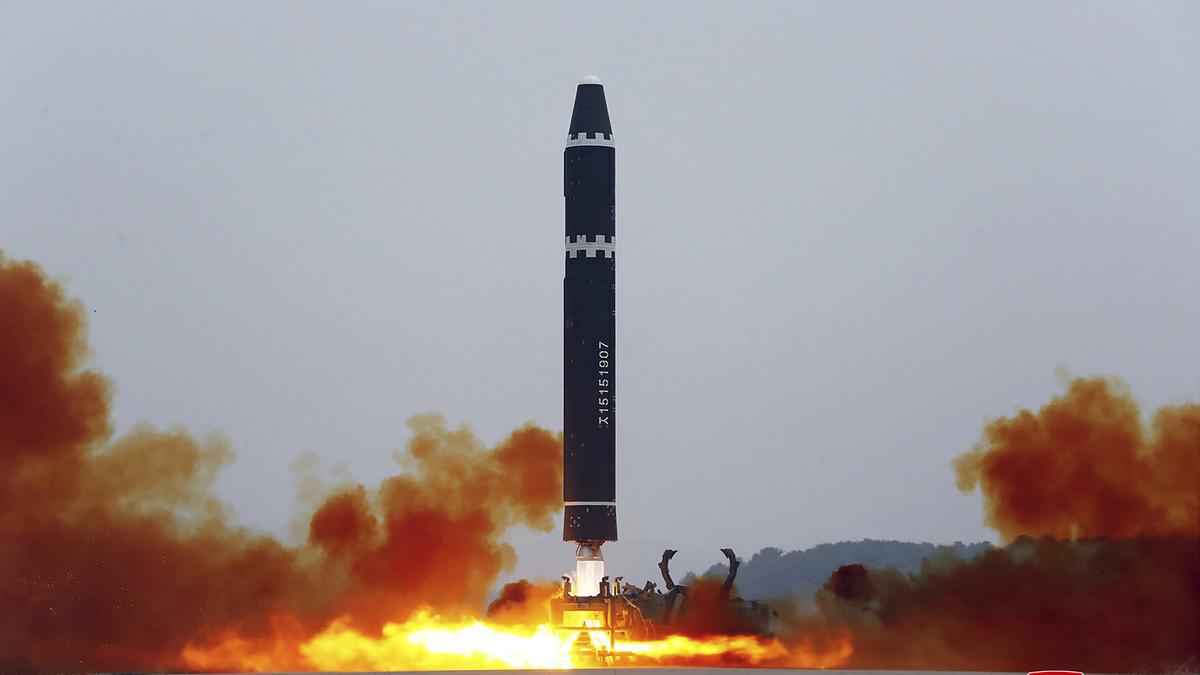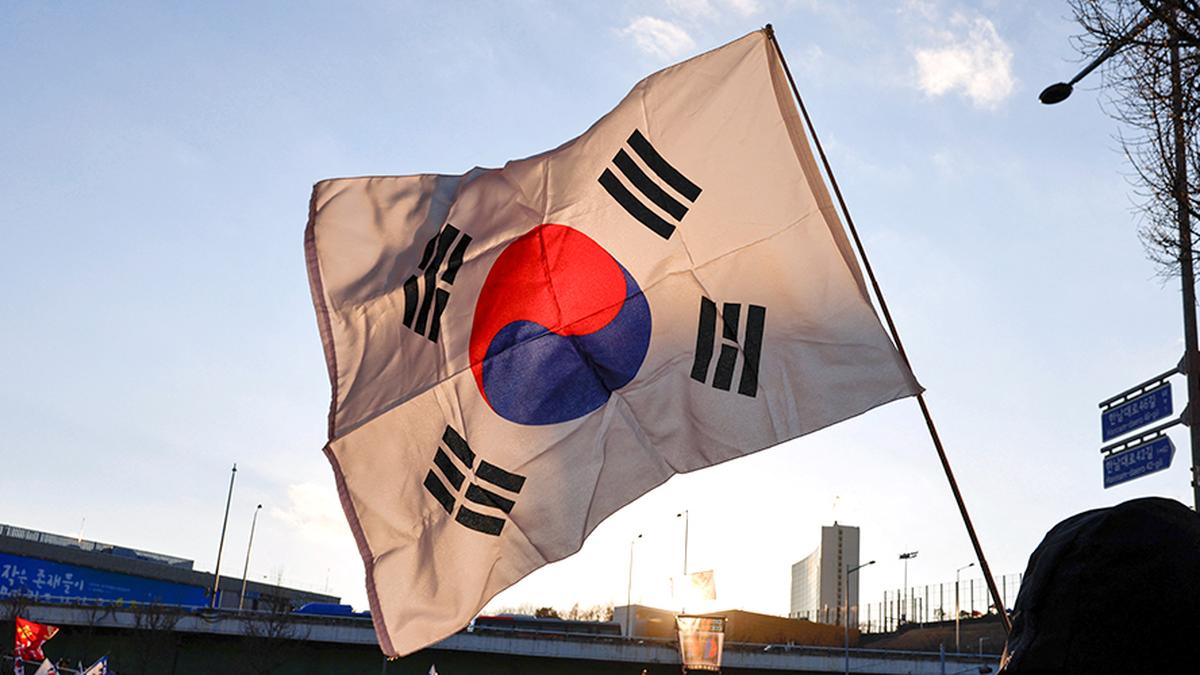- February 19, 2023
North Korea says it fired ICBM as warning to U.S., Seoul

North Korean government says this was a test launch of a Hwasong-15 intercontinental ballistic missile at Pyongyang International Airport on February 18, 2023.
North Korea said on February 19 it had test-fired an intercontinental ballistic missile (ICBM) as a warning to Washington and Seoul, saying the successful “surprise” drill demonstrated Pyongyang’s “capacity of fatal nuclear counterattack”.
Leader Kim Jong Un ordered the “sudden launching drill” at 8 a.m. on Saturday (2300 GMT) and a Hwasong-15 missile — a weapon first tested by the North in 2017 — was fired from Pyongyang airport that afternoon, the official KCNA reported.
South Korea’s military said it detected an ICBM launch at 17:22 (0822 GMT) on Saturday, which Japan said flew for 66 minutes before splashing down in its Exclusive Economic Zone, with their analysis indicating it was capable of hitting the mainland United States.
North Korea’s leadership hailed the test — the country’s first in seven weeks — saying it showed “the actual war capacity of the ICBM units which are ready for mobile and mighty counterattack,” KCNA said.
The launch was “actual proof” of the country’s “capacity of fatal nuclear counterattack on the hostile forces”, it added.
The sanctions-busting launch came just days before Seoul and Washington are due to start joint tabletop exercises aimed at improving their response in the event of a North Korean nuclear attack.
Pyongyang had last week warned of an “unprecedentedly” strong response to upcoming U.S.-South Korea drills, which it describes as preparations for war and blames for the deteriorating security situation on the Korean peninsula.
Not a traditional ‘test’
The Saturday test is significant as “the event was ordered the day-of and so this is not so much a traditional ‘test’, but an exercise,” U.S.-based analyst Ankit Panda told AFP.
“We should expect to see additional exercises of this sort,” he added.
Yang Moo-jin, professor at the University of North Korean Studies in Seoul, said the test showed Pyongyang was “equipped with a system capable of launching even a liquid-fuelled ICBM in less than half a day at unannounced orders without prior planning”.
Also Read | North Korea unveils ‘record’ number of ICBMs at military parade
He warned that it now looked like the security situation on the peninsula would deteriorate further in the next few months “as South Korea and the U.S. are expected to proceed with the joint training schedule and North Korea will… take a hardline response”.
Relations between the two Koreas are already at one of their lowest point in years, after North Korea declared itself an “irreversible” nuclear state and leader Kim called for an “exponential” increase in weapons production, including tactical nukes.
In response, South Korea’s President Yoon Suk Yeol has sought to boost cooperation with key security ally America, pledging to expand joint military exercises and improve Washington’s so-called extended deterrence offering, including with nuclear assets.
On Sunday, North Korea spokeswoman and Kim’s sister, Kim Yo Jong, claimed it was these moves by Seoul and Washington that “further endangers the situation every moment, destroying the stability of the region”, according to a KCNA report.
“I warn that we will watch every movement of the enemy and take corresponding and very powerful and overwhelming counteraction against its every move hostile to us,” she added.
Doubled aggression
All of this points to “the start of high-intensity provocations from North Korea,” Park Won-gon, professor at Ewha University, told AFP.
“What’s different from 2022 is that last year their justification was that the launches were part of their five-year military plan,” he said.
“Now they are making clear that they will counter the United States and South Korea,” Park said.
He said that the redoubled aggression from Pyongyang could also indicate the domestic situation had worsened. South Korean officials recently warned the country could be facing severe food shortages after years of pandemic-linked isolation.
“North Korea always takes a hardline approach and creates external crisis as part of its ‘seize mentality’ tactic to overcome internal struggles. It is a typical North Korean behaviour to unite the people by highlighting the South Korea-U.S. threat.”







